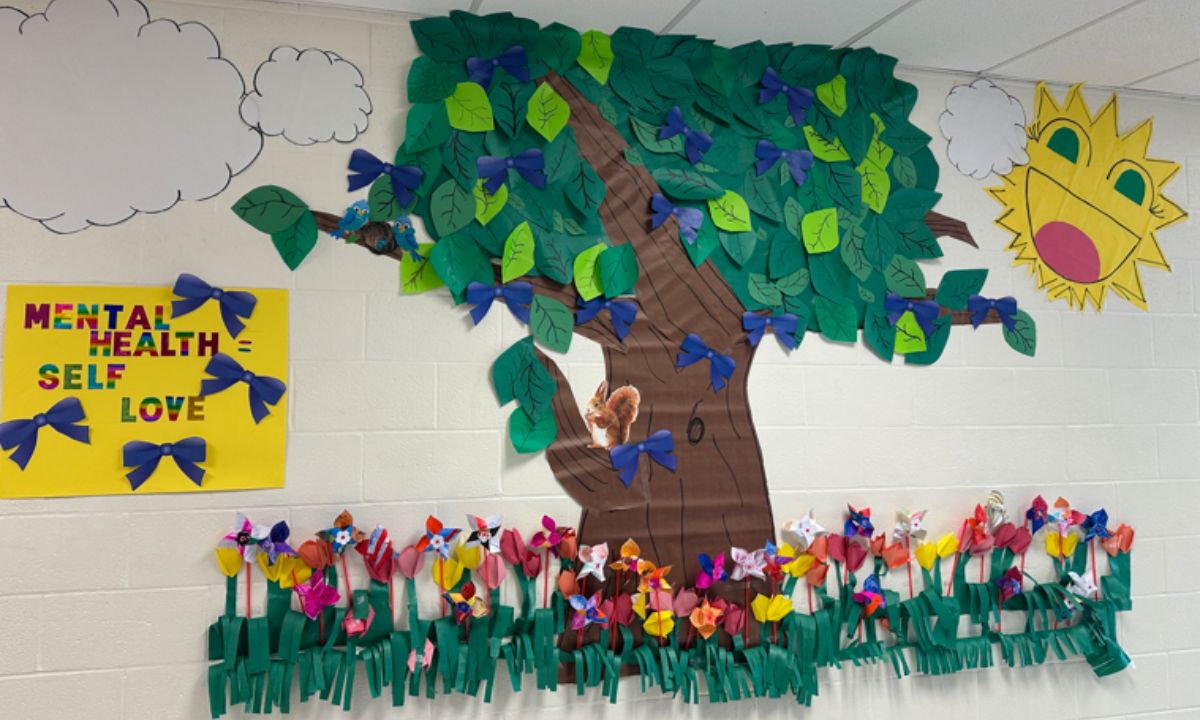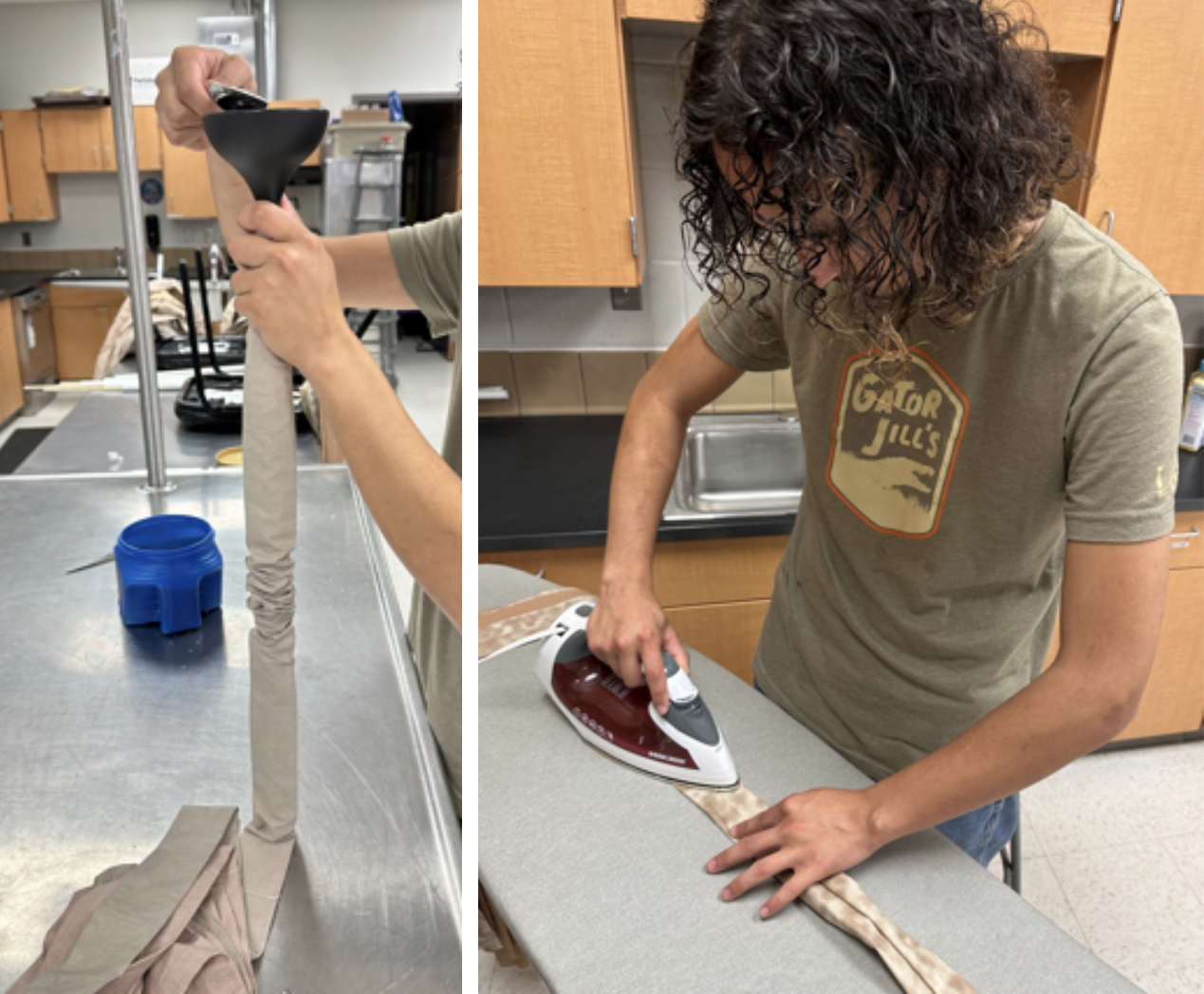When Civic Education Starts with Paper, Paint and a Pair of Scissors
Teacher's view: In my Oklahoma school, student art projects that wrap in math & science lessons are a pathway to civic engagement.

Get stories like this delivered straight to your inbox. Sign up for The 74 Newsletter
Too often, the arts get treated like something extra, something nice if a school has the time or the budget. But for me, art is life. Before I became an educator in the Oklahoma City Public Schools system, my professional career had been as a certified executive pastry chef. That path provided many opportunities to meld science and artistic creativity. Now, I combine my passion for art and service to help students discover what they’re capable of through creative civic engagement.
I’ve seen firsthand how overwhelmed and disconnected today’s youth are becoming, losing faith in themselves and one another. Students also get judged from the outside quite often — on test scores, on behavior, on penmanship. But when they craft their own art, they begin to find their voice and a unique point of view that can be expressed with and beyond words. Once they find that voice — the one they didn’t know they had — my students want to use it for something that matters.
One of the biggest obstacles to civic engagement for students is that most are never asked to serve their community, despite having so much to give. They just need to be invited in.
That’s why, for nine years, I have found ways to integrate student creativity with civic work through projects that accommodate young people’s differing abilities and interests. There are plenty of programs that create pathways for educators like me to engage young people in service learning; for example, my class has found many creative opportunities through programs like Youth Service America and Students Rebuild.
When I tell my students at John Marshall Enterprise High School that the art they’re creating is going to a stranger — that it’s going to help someone they’ll never meet — it is hard for them to comprehend how such a small act can truly make a difference in someone’s life.
In my Family & Consumer Sciences classes, for example, my students apply lessons from their science, social studies and math classes in creative service projects. One of our favorites this year was making neck-cooler ties for The HUGS Project. These fabric ties provide a cooling effect when worn around the neck and were donated to servicemen and women stationed in desert regions of the world, where heat is dangerous and relief is limited.
We explored the different properties of fabrics and how they might be used in various applications and regions of the world: natural fibers such as cotton are breathable and better for people with allergies, and won’t melt to skin like polyester or polycotton will in case of fire. We calculated the dimensions of each tie: 5 inches wide, 11 inches long, a quarter-inch for the seam. We learned how hydroponic beads, which are sewn into the ties, work: The absorbent nature of hydrogel expands the beads when soaked in water, which helps keep the fabric cool for hours.
We then sewed the ties ourselves and shipped them out. Even students who might not get an A in math learned about its applications through something tangible, something they could feel. This project wasn’t just art; it was science, it was math, it was compassion.

Through art, my students connect with the world and make sense of hard things. Many of them have faced trauma, and some are still living through it. I can see the healing taking place when students are looking down at their art and working with great focus. Their faces show the engagement of their heart.
For Mental Health Awareness Month, we joined the Yellow Tulip Project, which uses flowers to help break the stigma around mental health. Students made “tulip garden” art in the classroom and planted bulbs in the gardens outside. Even these small acts help students to feel connected and capable of creating change. Art is a vehicle for driving away loneliness and embracing hope and gratitude.
More than ever, students need to feel like they belong to their schools, their communities and the world around them. They need to know that their voices, ideas and kindness can make a difference. I see that happen when my class writes letters to veterans and creates encouragement cards for refugees, people experiencing food insecurity at food banks, seniors in isolation, children who are ill and young students just starting school. These letters and cards are delivered across our city, the country and even make their way around the world. Such simple acts of creativity invite kids and offer them a way to feel seen, connected and involved.
Arts education belongs at the heart of how schools teach students civic engagement, especially for those who don’t always feel invited to the table — those who’ve been overlooked or left out. Creativity provides a way in, allowing students to see that they matter and can make an impact. When they create something meaningful and send it into the world, something shifts. They begin to see themselves differently. They start to see themselves as part of the solution.
In my classroom, students see that art isn’t just about making something look pretty; it’s about creating something that matters. Whether it’s painting rocks with kind messages for veterans, decorating socks for Los Angeles students impacted by wildfires or creating origami and love links — colorful paper chains filled with encouraging words — for young children, these small acts of creativity help students believe they have something to give. And the truth is, they all do. They don’t have to be at the top of their class or in student government to make an impact. They just have to be willing to try.
Get stories like these delivered straight to your inbox. Sign up for The 74 Newsletter

;)
